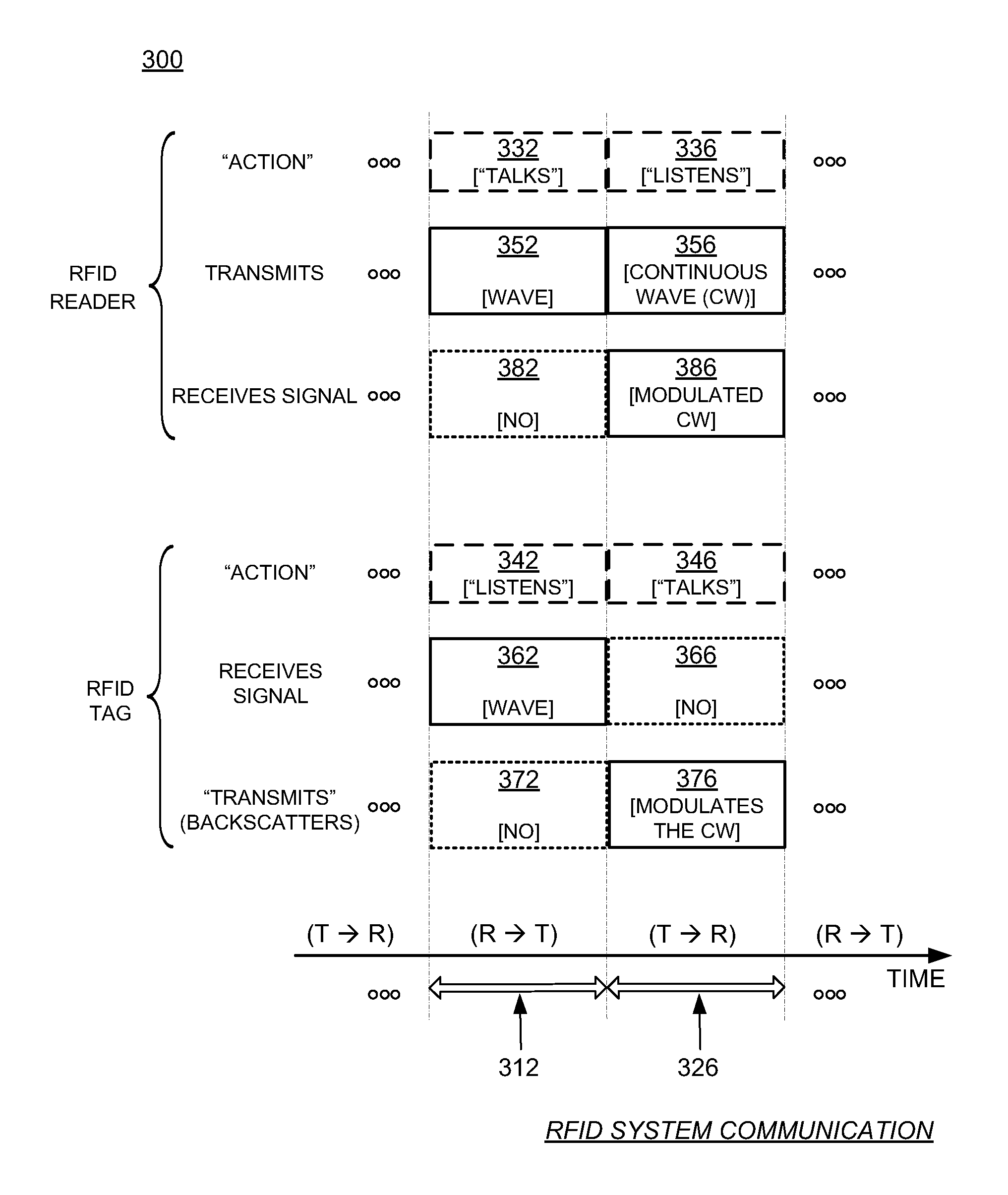RFID tag chips and tags refraining from participating in a subsequent inventorying attempt and methods
a technology of radio frequency identification and tag chips, applied in the field of radio frequency identification systems, can solve problems such as pattern problems and sometimes difficult to read tags
- Summary
- Abstract
- Description
- Claims
- Application Information
AI Technical Summary
Benefits of technology
Problems solved by technology
Method used
Image
Examples
Embodiment Construction
proceeds with reference to the accompanying Drawings, in which:
[0018]FIG. 1 is a block diagram of components of an RFID system.
[0019]FIG. 2 is a diagram showing components of a passive RFID tag, such as a tag that can be used in the system of FIG. 1.
[0020]FIG. 3 is a conceptual diagram for explaining a half-duplex mode of communication between the components of the RFID system of FIG. 1.
[0021]FIG. 4 is a block diagram of an implementation of an electrical circuit formed in an IC of the tag of FIG. 2.
[0022]FIG. 5A is block diagram of components of the circuit of FIG. 4, modified to emphasize a signal operation during a R→T session of FIG. 3.
[0023]FIG. 5B is the block diagram of components of the circuit of FIG. 4, modified to emphasize a signal operation during a T→R session of FIG. 3.
[0024]FIG. 6 is a block diagram showing a detail of an RFID reader system, such as the one shown in FIG. 1.
[0025]FIG. 7 is a block diagram of a whole RFID reader system according to embodiments.
[0026]FI...
PUM
 Login to View More
Login to View More Abstract
Description
Claims
Application Information
 Login to View More
Login to View More - R&D
- Intellectual Property
- Life Sciences
- Materials
- Tech Scout
- Unparalleled Data Quality
- Higher Quality Content
- 60% Fewer Hallucinations
Browse by: Latest US Patents, China's latest patents, Technical Efficacy Thesaurus, Application Domain, Technology Topic, Popular Technical Reports.
© 2025 PatSnap. All rights reserved.Legal|Privacy policy|Modern Slavery Act Transparency Statement|Sitemap|About US| Contact US: help@patsnap.com



